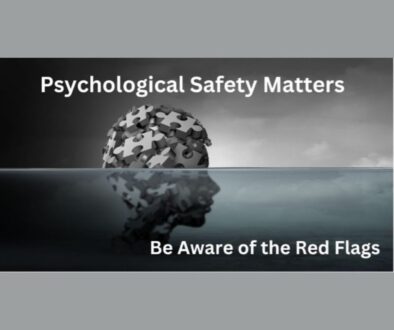Emotional Support: How to Give It in Times of Distress

Have you ever watched helplessly while someone struggled with fear, anxiety, overwhelm, loss or discouragement? They may have poured their heart out about a relationship break-up, a death, loss of a job, a parental misjudgment, or a life-threatening situation. Providing calm support can be challenging. Here are some strategies to help you in times of distress to provide effective emotional support.
The foundation of giving emotional support is based upon a caring relationship with the person regardless of them being a family member, friend, or co-worker. It was the loneliness researcher, Julianne Holt-Lunstad, who wrote,
“The mere perception of the availability of support can go a long way in helping, not only our emotional well-being, but our physical health.”
Consequently, being kind, attentive, and emotionally regulated daily with others can build that trusting connection when a disruption in well-being happens.
Here are four steps to put our care into action.
Step One: Create Emotional Safety
“When dealing with people, remember you are not dealing with creatures of logic, but with creatures of emotion.” Dale Carnegie
- Check for Physical Safety
One night our daughter, Kelly called us after being in a car accident. It was obvious she was distraught. We checked her physical wellbeing by asking, “Are you okay? Does anything in your body hurt?” Later, during another phone call, we checked with her that the car was drivable.
If our distressed person is in the same space as us, we can encourage them to sit with us. Sitting helps the body feel supported and grounded. We can offer something to drink, and perhaps say, “You are safe now. I’m here.”
- Be Present
We can be present by noticing facial expressions, body movements, words, plus tone and pace of speech. If someone is in a highly distressed state they often want to argue, yell, flee, scream, not be able to speak, or collapse in hopelessness. Our job is not to take any of those nervous system reactions personally. We can remind ourselves when people experience significant distress that they are unable to think clearly. This is sometimes called an amygdala highjack. Noticing our person’s reactions and staying calm allows for at least one grounded and fully functioning brain to be present.
- Breathe
But what if we start to panic, feel fear or secondary distress? We can use the breath to bring ourselves back to the present moment. Basically, we take several breaths and exhale longer than we inhale; it doesn’t matter if our breathing is four counts in and seven out or five in and eight out.
- Engage the Body
We monitor our breathing to remain calm. We also use soft eyes while sitting face to face with an open posture.
- Welcome Connection
We welcome connection so our person knows we are present. We soothe our person’s fired amygdala, “I’m here. I will take care of this. You’ve had a scary accident.” If our person will allow, we start to take over small tasks such as, “I will call the tow truck company to see if your car arrived.”
If our connection is online with Facetime or Zoom, we make sure our facial expressions show caring.
Step Two: Really Listen for Emotional Support
“Listening is not merely talking, though even that is beyond most of our powers; it means taking a vigorous, human interest in what is being told us.” Alice Duer Miller, 19th century poet and feminist
Too often we assume we are listening. We think, “Oh! It’s simple. I just don’t talk so much.” But effective listening requires participation, hence the term active listening. It was Stephen Covey, author of Seven Habits of Highly Effective People, who said, “Seek first to understand.” Before we try to convince our distressed person to decide anything, we are wise to listen to aide them in calming down and assuring them, they are now physically and/or emotionally safe.
- Show Compassion
Compassion means that we care. We can demonstrate our care by saying it, “You matter to me.” Also, we indicate we have nowhere else to be. “I’m here.” We demonstrate comfort while listening to a stream of verbiage or sit in silence. We create emotional safety, when we settle into ourselves with soft eyes, focused attention, and relaxed posture.
We can Imagine being in witness mode, that is noticing our person’s thoughts, feelings, and body movements with revenant curiosity. It may seem as if we are doing little but nodding our head. That is why being with is undervalued. Yet there is plenty of evidence that our gift of attentive time is priceless.
- Listen with Empathy
Empathy is compassion in action. The Cambridge dictionary defines empathy as “the ability to share someone else’s feelings or experiences by imagining what it would be like to be in another person’s situation.”
Use Classic Empathic Listening Steps
Step One: We affirm we are listening. “I’m listening.”
Add silence
Step Two: We encourage more sharing, especially if your person’s emotions are still charged. “Tell me more.”
Add silence
Step Three: We affirm emotions until they are calmed. “So, you are feeling scared you will be blamed. Is that right?”
Add silence
Step Four: We confirm emotions have calmed “So, are you feeling focused enough to make the call?”
Quick Emotional Intelligence (EQ) Lesson
The word emotions has a different meaning to the word, feelings. E-motions are our muscular, organs, and nervous system sensations or signals. Feelings are the labeling words we use to describe our emotions. Here are some basic feeling words and their mild to high energy states.
down to SAD to miserable
disappointed to HURT to crushed
uneasy to SCARED to terrified
agitated to MAD to furious
content to HAPPY to ecstatic
Video (10.28 min) Four Forms of Support: How to Create Emotionally Safe Spaces
Step Three: Give Hope for Emotional Support
“The power for creating a better future is contained in the present moment: You create a good future by creating a good present.” Eckhart Tolle, The Power of Now
- Reorient Back to the Present Moment
We can tell if our person is in a calm and centered state by noticing if they make eye contact, their breathing is normal and their body is settled. For example, you might see their shoulders relax and fall. Tilt your head and smile. See if the gesture is acknowledged. If so, you can sense they have returned to a centered and focused state. In a way, they’re back! They’re emotionally regulated and connected to you and their pre-frontal (adult) brain.
If they are not fully present, we can invite deep breathing. “How about taking a breath or two with me?”
- Share to Normalize
In the story with Kelly’s car accident, it was late that same night I shared with her what happened when I made an error in judgement and caused a car accident. By sharing my experience, I gave her the message, “You are not the only one who has been in a car accident. I survived and am doing well. So will you.”
3. Problem Solve
Now that emotions are settled and our person has a fully functioning, logical brain we can problem solve. Name the problem as in, “Your car is not drivable. That’s a problem. How will you get to work? What’s your plan?” Depending on the circumstance we might add, “How can I help?”
Step Four: Gently Wrap Up
“The need for connection and community is primal, as fundamental as the need for air, water, and food.” Dean Ornish, American physician and researcher
- Make a Plan
Before closing our support time we ensure that our person has their basic needs met, and has the resources in place to move forward with their daily life. Make a date for a check in for the next day or a week. “I will call you tomorrow to see how you are doing. Ok?” - Say Goodbye
If appropriate, we offer a hug and a sweet, “Love you!”
Remember the power of witnessing has saved many people’s well-being and, often, lives. We are living in scary times! We are in this together. Bless you for your caring intentions and demonstrating emotional support.
Helpful Books: Resources
- Goleman, Daniel (2005) Emotional Intelligence Why It Can Matter More Than IQ
- ————- (2007) Social Intelligence: The New Science of Human Relationships
- Morgan, Patricia (2005) Frantic Free: 147 Ways to Calm Down & Lighten Up
- ————-(2019) How to Develop Emotional Insight
- Rosenberg, Marshall, (2015) Nonviolent Communication: A Language of Life: Life-Changing Tools for Healthy Relationships
- Murthy, Vivek (2020) Together: The Healing Power of Human Connection in a Sometimes Lonely World





March 13, 2023 @ 9:00 am
Your wisdoms and suggestions are of great help when I am working with my clients. There is always a counseling part of doing hypnotherapy work with a person. Thankyou. Morgan Willacy.
March 18, 2023 @ 10:54 pm
Hi Morgan, I so appreciate your comment. Thank you. I often weave hypnotherapy into my therapeutic counselling. I feel affirmed that my perspectives are helpful in your work.